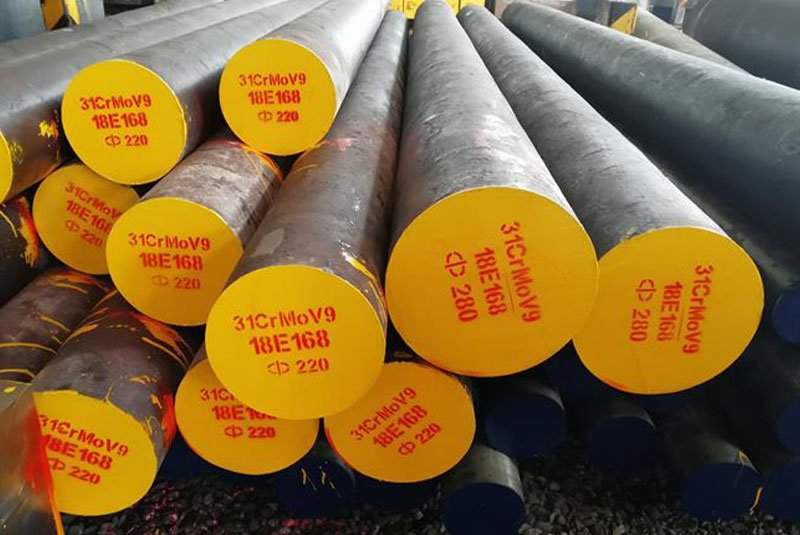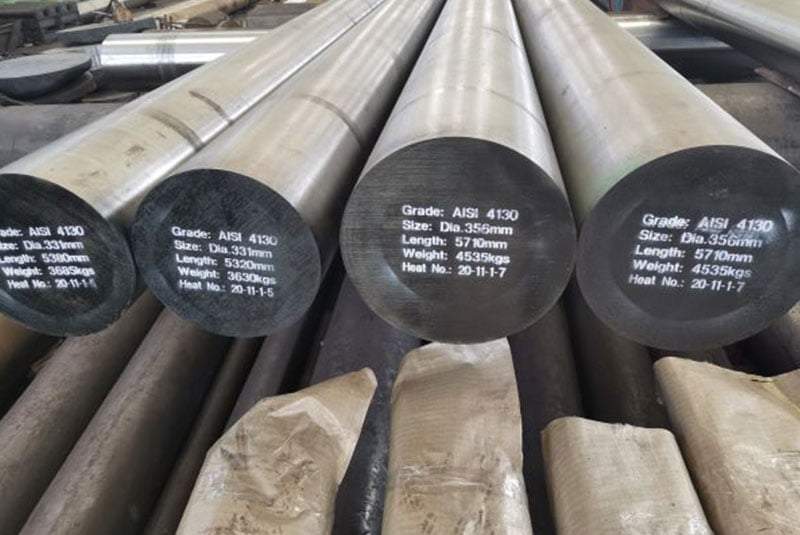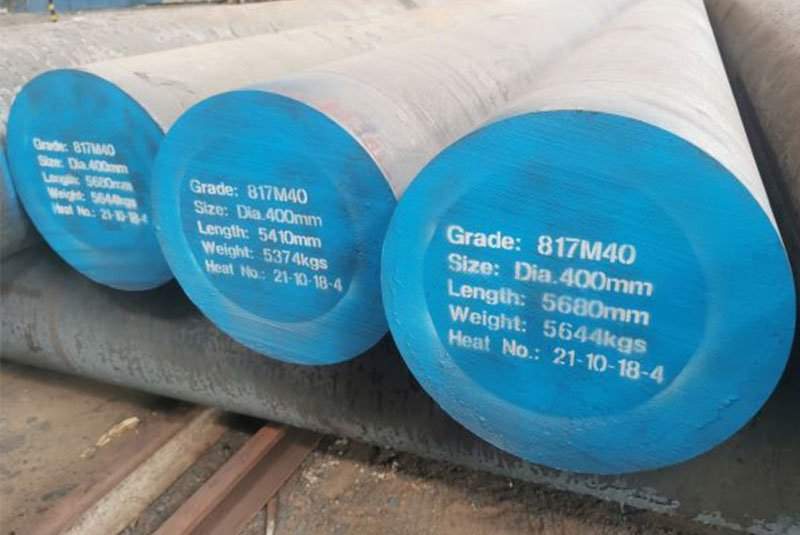Introduction
Alloy steel is a versatile and widely used material in various industries due to its enhanced mechanical properties and performance compared to carbon steel. By adding different alloying elements, alloy steel exhibits improved characteristics such as increased strength, toughness, hardness, and resistance to wear and corrosion. This comprehensive guide will explore the key characteristics of alloy steel, its types, applications, and benefits, providing valuable insights for engineers, manufacturers, and anyone interested in this remarkable material.
Understanding Alloy Steel

What is Alloy Steel?
Alloy steel is a type of steel that includes additional alloying elements besides carbon to improve its mechanical properties. These elements can include manganese, nickel, chromium, molybdenum, vanadium, silicon, and boron. The precise combination and quantity of these elements determine the specific characteristics of the alloy steel.
- Definition: Steel alloyed with additional elements to enhance its properties.
- Purpose: To improve strength, toughness, hardness, and resistance to wear and corrosion.
Types of Alloy Steel
Alloy steel can be broadly categorized into two types: low alloy steel and high alloy steel. Each type has distinct characteristics based on the amount of alloying elements present.
Low Alloy Steel
Low alloy steel contains a small percentage of alloying elements, usually less than 5%. It is known for its excellent strength, toughness, and weldability.
- Alloying Elements: Less than 5%
- Characteristics: High strength, good toughness, and weldability
- Applications: Construction, pipelines, and automotive components
High Alloy Steel
High alloy steel contains a higher percentage of alloying elements, typically more than 5%. This type of alloy steel offers superior corrosion resistance, hardness, and high-temperature performance.
- Alloying Elements: More than 5%
- Characteristics: Superior corrosion resistance, hardness, and high-temperature performance
- Applications: Aerospace, chemical processing, and power generation
Table: Comparison of Low Alloy Steel and High Alloy Steel
| Characteristic | Low Alloy Steel | High Alloy Steel |
|---|---|---|
| Alloying Elements | Less than 5% | More than 5% |
| Strength | High | Moderate to high |
| Toughness | Excellent | Good |
| Weldability | Good | Moderate |
| Corrosion Resistance | Moderate | Excellent |
| Applications | Construction, pipelines, automotive | Aerospace, chemical processing, power generation |
Key Characteristics of Alloy Steel

Strength and Toughness
Enhanced Strength
One of the primary characteristics of alloy steel is its enhanced strength compared to carbon steel. The addition of elements such as chromium, nickel, and molybdenum increases the tensile and yield strength of the steel, making it suitable for high-stress applications.
- Tensile Strength: The maximum stress that the steel can withstand while being stretched or pulled.
- Yield Strength: The stress at which the steel begins to deform plastically.
Improved Toughness
Toughness is the ability of alloy steel to absorb energy and deform without fracturing. Alloying elements like manganese and nickel enhance the toughness of the steel, making it more resistant to impact and mechanical stress.
- Impact Resistance: Ability to withstand sudden loads and shocks.
- Mechanical Stress: Resistance to deformation under various loads.
Hardness and Wear Resistance
Increased Hardness
Hardness refers to the ability of alloy steel to resist deformation and scratching. Alloying elements such as vanadium, tungsten, and molybdenum contribute to the hardness of the steel, making it suitable for cutting tools, dies, and other applications requiring high surface hardness.
- Surface Hardness: Resistance to surface deformation and wear.
- Cutting Tools: Suitable for manufacturing cutting and machining tools.
Superior Wear Resistance
Wear resistance is the ability of alloy steel to withstand abrasion, friction, and erosion. Elements like chromium and silicon enhance the wear resistance, making the steel ideal for applications involving heavy wear and tear.
- Abrasion Resistance: Resistance to surface wear caused by friction.
- Erosion Resistance: Resistance to material loss due to mechanical action.
Corrosion Resistance
Enhanced Corrosion Resistance
Corrosion resistance is one of the most important characteristics of alloy steel, especially in harsh environments. The addition of chromium forms a passive oxide layer on the surface, protecting the steel from rust and corrosion.
- Chromium Oxide Layer: A protective layer that prevents oxidation.
- Resistance to Rust: Ideal for environments exposed to moisture and chemicals.
Suitable for Aggressive Environments
Alloy steels with high chromium and nickel content, such as stainless steel, are particularly resistant to corrosion in aggressive environments, including marine, chemical, and industrial settings.
- Marine Applications: Suitable for use in saltwater environments.
- Chemical Processing: Resistant to corrosion from acids and alkalis.
High-Temperature Performance
Thermal Stability
Alloy steel exhibits excellent thermal stability, retaining its mechanical properties at high temperatures. Elements like molybdenum and tungsten enhance the steel’s ability to withstand high temperatures without losing strength or hardness.
- High-Temperature Resistance: Maintains strength and hardness at elevated temperatures.
- Applications: Suitable for use in power generation and aerospace industries.
Oxidation Resistance
Oxidation resistance is the ability of alloy steel to resist scaling and degradation at high temperatures. The presence of chromium and aluminum helps form a protective oxide layer, preventing oxidation at elevated temperatures.
- Scaling Resistance: Prevents surface degradation due to high temperatures.
- Protective Oxide Layer: Forms a barrier against oxidation.
Machinability and Weldability
Improved Machinability
Machinability refers to the ease with which alloy steel can be cut, shaped, and finished using machine tools. Elements like sulfur and lead are sometimes added to improve the machinability of the steel, making it easier to work with.
- Ease of Cutting: Facilitates machining processes such as drilling and milling.
- Surface Finish: Achieves a high-quality finish with minimal effort.
Excellent Weldability
Weldability is the ability of alloy steel to be welded without cracking or losing its mechanical properties. Alloying elements like nickel and manganese enhance the weldability, making it easier to join the steel using various welding techniques.
- Welding Techniques: Suitable for different welding methods such as MIG, TIG, and arc welding.
- Joint Strength: Maintains strength and integrity at welded joints.
Applications of Alloy Steel

Construction and Infrastructure
Structural Components
Alloy steel is widely used in construction for structural components such as beams, columns, and reinforcements. Its high strength and toughness make it ideal for supporting heavy loads and withstanding environmental stress.
- Beams and Columns: Provide structural support for buildings and bridges.
- Reinforcements: Used in concrete structures for added strength.
Pipelines and Pressure Vessels
The excellent corrosion resistance and high-temperature performance of alloy steel make it suitable for pipelines and pressure vessels in the oil and gas industry. It can withstand harsh environments and high pressures.
- Oil and Gas Pipelines: Transport oil, gas, and other fluids.
- Pressure Vessels: Store and transport pressurized gases and liquids.
Automotive and Transportation
Engine Components
Alloy steel is used in the automotive industry for manufacturing engine components such as crankshafts, camshafts, and connecting rods. Its high strength and wear resistance ensure the durability and performance of these critical parts.
- Crankshafts and Camshafts: Provide rotational motion and timing.
- Connecting Rods: Transfer motion between engine components.
Chassis and Suspension
The toughness and impact resistance of alloy steel make it ideal for automotive chassis and suspension systems. It provides the necessary support and stability for vehicles.
- Chassis: Forms the vehicle’s frame and supports the body.
- Suspension Systems: Absorbs shocks and maintains vehicle stability.
Aerospace and Defense
Aircraft Components
The aerospace industry relies on alloy steel for manufacturing aircraft components such as landing gears, turbine blades, and structural parts. Its high strength-to-weight ratio and corrosion resistance are crucial for aerospace applications.
- Landing Gears: Provide support during takeoff and landing.
- Turbine Blades: Withstand high temperatures and stresses.
Military Equipment
Alloy steel is used in the defense industry for making military equipment such as armor plating, weapons, and vehicle components. Its durability and resistance to impact and corrosion are essential for military applications.
- Armor Plating: Provides protection against ballistic impacts.
- Weapons: Manufacture of firearms and artillery components.
Power Generation and Energy
Turbine Components
In the power generation industry, alloy steel is used for turbine components such as blades, rotors, and casings. Its high-temperature performance and corrosion resistance ensure the efficiency and longevity of turbines.
- Turbine Blades and Rotors: Convert energy into mechanical motion.
- Casings: Enclose and protect turbine components.
Renewable Energy
Alloy steel is also used in renewable energy applications, including wind turbines and solar power plants. Its strength and corrosion resistance make it suitable for harsh environmental conditions.
- Wind Turbines: Manufacture of towers, blades, and nacelles.
- Solar Power Plants: Structural components for solar panels and mounting systems.
Conclusion
Alloy steel‘s unique characteristics, including enhanced strength, toughness, hardness, wear resistance, corrosion resistance, high-temperature performance, machinability, and weldability, make it an invaluable material across various industries. Understanding these characteristics of alloy steel and their applications can help you make informed decisions when selecting materials for your projects. Whether you are in construction, automotive, aerospace, or energy sectors, alloy steel offers the performance and reliability needed to meet your specific requirements.
FAQ
What are the key characteristics of alloy steel?
The key characteristics of alloy steel include enhanced strength, improved toughness, increased hardness, superior wear resistance, excellent corrosion resistance, high-temperature performance, and good machinability and weldability. These properties make alloy steel suitable for a wide range of applications.
How do the characteristics of alloy steel differ from carbon steel?
The characteristics of alloy steel differ from carbon steel mainly due to the addition of various alloying elements such as chromium, nickel, molybdenum, and vanadium. These elements enhance mechanical properties like strength, toughness, hardness, and corrosion resistance, making alloy steel more suitable for demanding applications compared to carbon steel.
What applications benefit from the unique characteristics of alloy steel?
Applications that benefit from the unique characteristics of alloy steel include construction (structural components, pipelines), automotive (engine parts, chassis), aerospace (aircraft components, turbine blades), defense (armor plating, military equipment), and energy (turbine components, renewable energy systems). The enhanced properties of alloy steel make it ideal for these demanding environments.
Why is corrosion resistance an important characteristic of alloy steel?
Corrosion resistance is an important characteristic of alloy steel because it prevents rust and degradation, thereby extending the lifespan of components in harsh environments. This makes alloy steel ideal for applications exposed to moisture, chemicals, and high temperatures, such as in marine, chemical processing, and industrial settings.
How do alloying elements improve the characteristics of alloy steel?
Alloying elements such as chromium, nickel, molybdenum, and vanadium improve the characteristics of alloy steel by increasing its strength, toughness, hardness, wear resistance, corrosion resistance, and high-temperature performance. Each element contributes specific properties that enhance the overall performance and suitability of the steel for various applications.
Why is toughness an essential characteristic of alloy steel?
Toughness is an essential characteristic of alloy steel because it allows the material to absorb energy and deform without fracturing. This makes alloy steel resistant to impact and mechanical stress, making it suitable for structural applications, automotive parts, and other high-stress environments where durability is critical.
How does wear resistance enhance the characteristics of alloy steel?
Wear resistance enhances the characteristics of alloy steel by providing durability against abrasion, friction, and erosion. This makes alloy steel suitable for heavy-duty applications such as construction machinery, mining equipment, and industrial tools that require long-lasting performance under harsh conditions.
What makes machinability an important characteristic of alloy steel?
Machinability is an important characteristic of alloy steel because it determines how easily the material can be cut, shaped, and finished using machine tools. Good machinability allows for efficient manufacturing processes, reducing production time and costs while achieving high-quality finishes for components used in various industries.
What role does high-temperature performance play in the characteristics of alloy steel?
High-temperature performance is a crucial characteristic of alloy steel, enabling it to retain its strength and hardness at elevated temperatures. This property makes alloy steel suitable for use in high-stress environments like power generation, aerospace, and industrial processes where components are exposed to intense heat.
